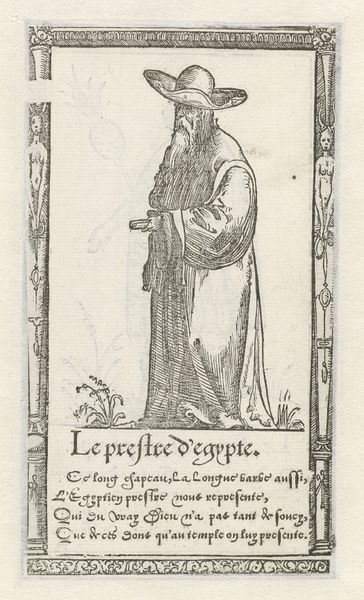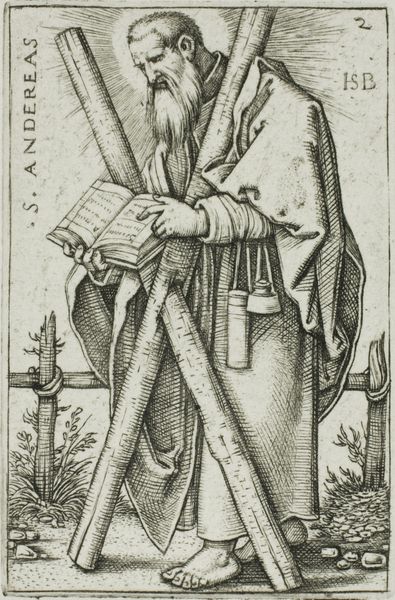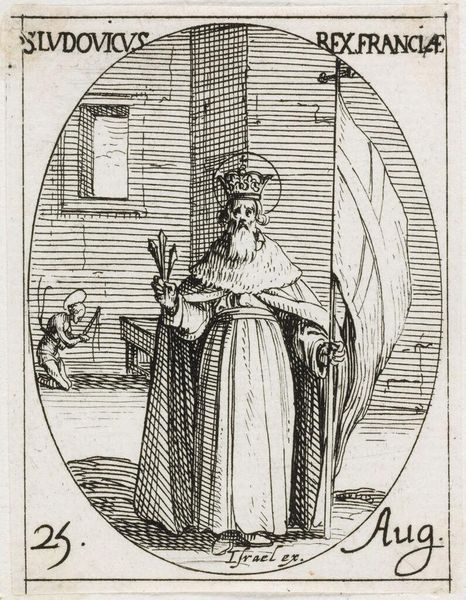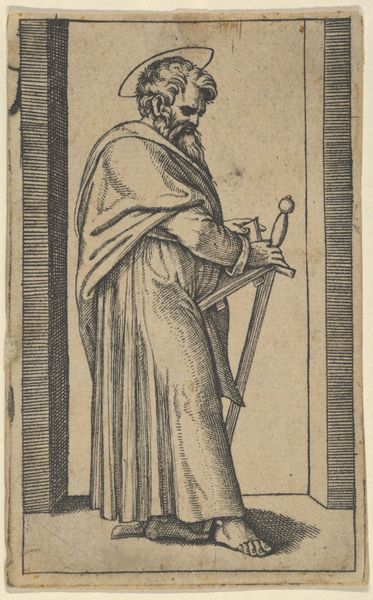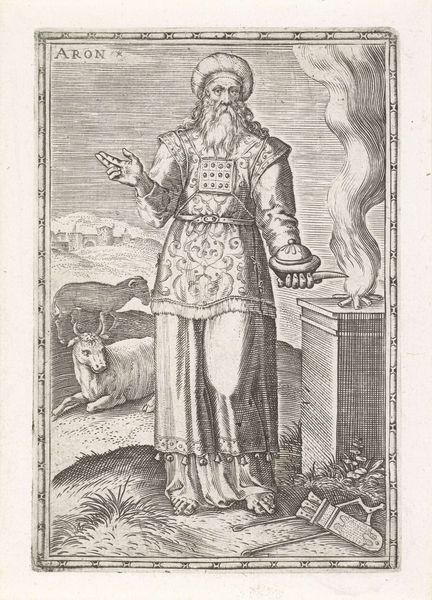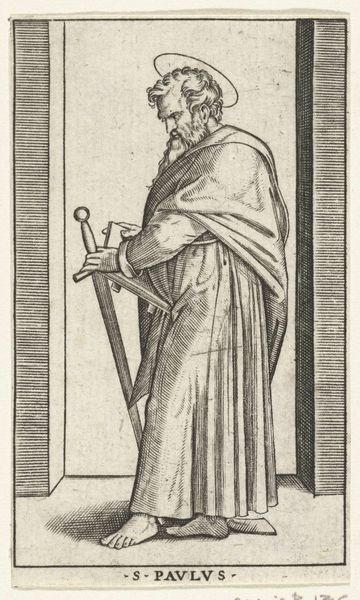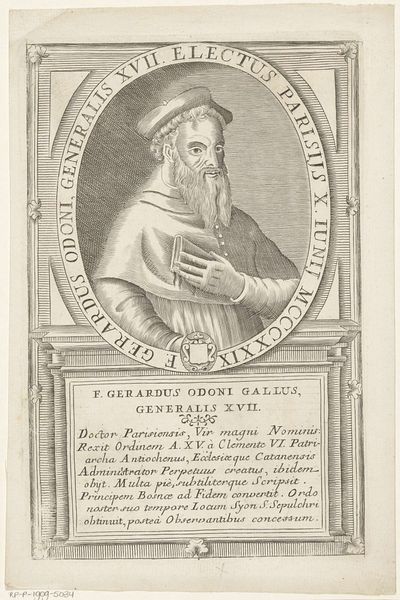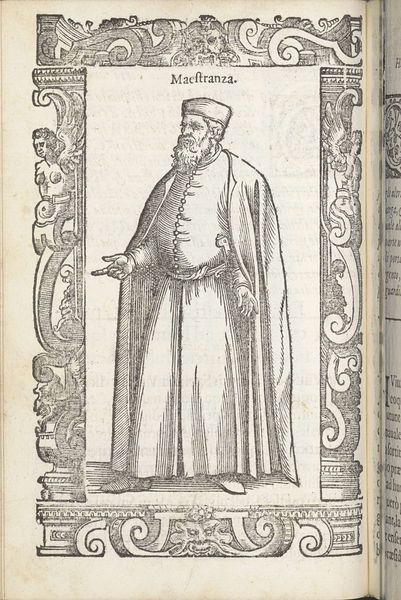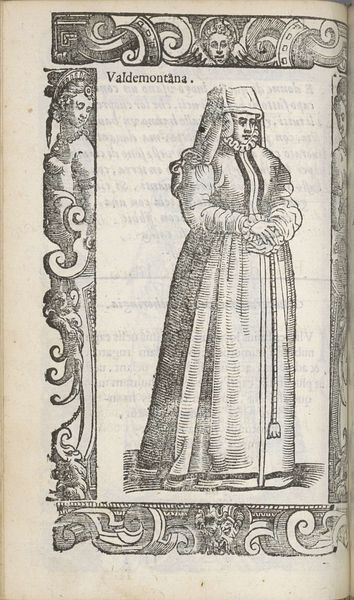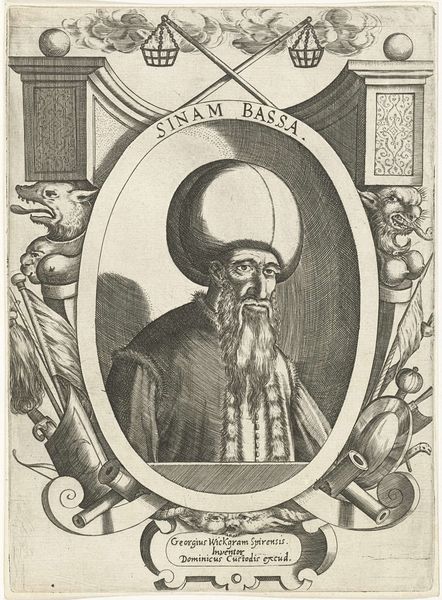
print, engraving
#
portrait
# print
#
figuration
#
11_renaissance
#
engraving
Dimensions: height 74 mm, width 37 mm
Copyright: Rijks Museum: Open Domain
Curator: Here we have Pieter Serwouters' 1628 engraving, "Hippocrates van Kos," residing here at the Rijksmuseum. What is your immediate impression of it? Editor: The starkness of the black and white lends the print a feeling of gravitas. The density of line work—especially in the robes and beard—suggests a deliberate texture, a weighty presence for such a small piece. Curator: Indeed. Serwouters produced this engraving during a fascinating period in Dutch intellectual history. It’s worth noting that the work appropriates the persona of Hippocrates. A clear representation, in classical Greek, with an attempt at making the ideas he stood for understandable and valid. Editor: I find the framing quite interesting. The figure is juxtaposed with shelves of books in the background, perhaps signifying knowledge, tradition. He's literally framed by learning. The inscription he is holding so centrally really drives at this feeling too. Curator: That's an astute observation, in that his presence underscores the enduring relevance of classical wisdom for the burgeoning scientific revolution. Also note his hand gesturing toward the script. It subtly enforces the connection between ancient medical wisdom and its interpretation in the 17th century, speaking to a very specific scholarly engagement. This engraving served not just as a portrait but also as a kind of advertisement of intellectual engagement in Leiden at the time. Editor: You’re right, the strategic deployment of visual cues like his beard—which certainly connotes age and knowledge. Do you also get the sense that this work aims at validation for the elite class that has this particular information. Like, it serves as both knowledge, and a signifier that one exists with high social status, because they would be able to grasp the image. Curator: It’s entirely plausible, thinking about the audience that might consume and interpret the symbols presented here and their associated identities, like class and academic access. Serwouters certainly created a potent and enduring image, layers of knowledge, representation, and social construction are revealed. Editor: Seeing it through your perspective brings a level of analysis that reveals even further considerations in form, identity, class, and ultimately artistic representation.
Comments
No comments
Be the first to comment and join the conversation on the ultimate creative platform.
